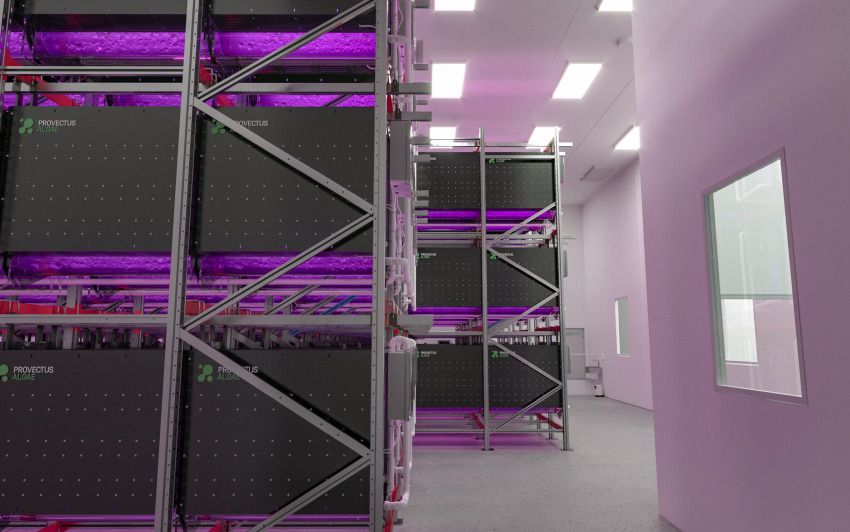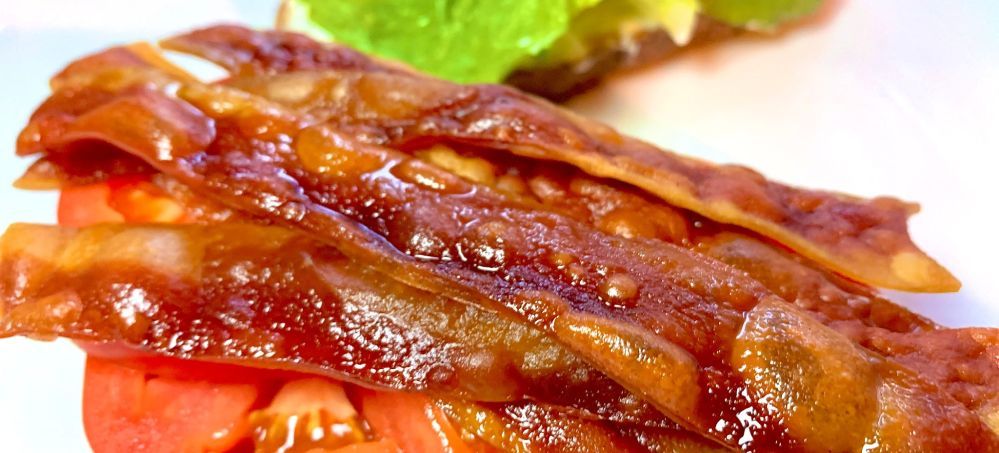Between 2005-2012, venture capitalists poured millions of dollars into startups attempting to make fuel from microalgae, getting their fingers badly burned in the process. But could algae be gearing up for a second bloom?
“Having gone through what we call algae 1.0, people are really hesitant to invest in this space again,” said Nusqe Spanton, founder and CEO at Australian algae startup Provectus Algae, during a panel debate at the SynBioBeta conference in Oakland, California, last week.
“Huge amounts of money went into algae 1.0, and really what have we got to show for it? Very little.”
But the failure of algae biofuels to compete in a vast, commoditized, highly subsidized energy market should not be used as a cudgel to beat a second wave of algae-fueled startups focusing on more specialized markets in food and nutrition, personal care and cosmetics, agriculture, animal health, and sustainable packaging, said Spanton.
“To take something like biofuels as a starting point and go into a massive commodities market that is heavily controlled and variable in the price point [was a bold move]. I won’t say the first wave [algae biofuel companies] was set up to fail, but it’s not an easy thing to do,” said Spanton.
Domesticating microalgae
Santanu Dasgupta, SVP at Mumbai-based Reliance Industries, noted that algae have been around for three billion years. Writing it off because we spent a couple of decades—an evolutionary blink of an eye— unsuccessfully trying to coax it to compete with fossil fuels, therefore seems a little short-sighted, he observed.
“We can’t take algae from the wild, grow it in our backyard and expect it to grow the way we want. Take corn or rice or wheat; we’ve basically domesticated them. But that domestication piece is missing [for microalgae].
“We don’t have 200-300 years, which is how long it took to get to the corn varieties we grow today, so we have to use the synthetic biology tools available today to make algae tolerant to the stresses, to make it more productive, to increase its photosynthetic efficiency.”
He added: “Resiliency and productivity are key and in synthetic biology, we now have all kinds of tools to achieve these things.”

Provectus Algae: If you can control the light, you can control the DNA
Spanton at Provectus Algae added: “The key challenge in using photosynthetic organisms as a synthetic biology platform is being able to grow them at scale in a controlled environment. We’re talking about millions of different species and sub-strains that all grow in different environments, so being able to control the light and the environment in which they grow is the key to making them productive.
“There is a lot of work going on in microalgae, but growing it at scale is the critical missing piece. You can’t go to Thermo Fisher and buy an algae bioreactor off the shelf. It doesn’t exist for photosynthetic algae [which is often grown outdoors in open ponds, presenting challenges if you’re using genetically engineered strains]. But that gave us the opportunity to rethink the way to do this and automate the entire [indoor] process from day one.
“Essentially, we take out the human that looks in a microscope every day to work out whether the organism is better or worse off than when we last looked at it.”
A scalable, modular, biomanufacturing platform
Provectus Algae has developed closed-system automated bioreactors growing photosynthetic algae at high densities with a series of LED lights. According to Spanton, it’s a “scalable, modular, biomanufacturing platform that looks a bit like an Amazon warehouse with racking systems.”
Through its cloud-enabled, automated “self-optimizing” system, Provectus can deliver any type of light in the visible spectrum but also in the infrared and UV spectrum, manipulating the algae and pushing it down a metabolic pathway to increase the production of a target substance.
In the first instance, it identifies algae species that naturally produce a given compound such as a pigment or fatty acid. Provectus exposes the algae to the right kind of light, which alters its DNA and improves its productivity.
However, it can also use synthetic biology techniques such as CRISPR to upregulate the production of a given substance or to produce products that don’t naturally occur in algae, said Spanton, who has two demonstration plants in Australia coming online later year.
Provectus Algae’s first product—launching next year—is a red pigment for meat alternatives, but it is also working on everything from flavors to ingredients that can be fed to livestock to reduce methane emissions, collagen inducers, skin moisture enhancers, palm oil replacements, protein therapeutics for animal health, and antimicrobials, he said.
“Algae and seaweed are some of the most efficient organisms on the planet to produce antimicrobials because of the environment in which they grow; they secrete anti-microbials naturally.”
‘Our feedstocks are light and carbon dioxide’
He added: “As we move forward we have to identify the right targets to enter the market with, but I see a huge opportunity in the next 5-10 years. Our feedstocks are light and carbon dioxide, so the potential is massive to decouple manufacturing from petroleum and from agricultural feedstocks.
“But we need to open up capital markets further to build out our operations. And identifying teams that have significant backgrounds in scale-up and supply chains to build out infrastructure is critical.
“If you don’t know how to scale up, that can be a real killer,” added Spanton, who recently secured a strategic investment from CJ Bio, part of Korean biomanufacturing giant CJ CheilJedang to expand his ‘carbon negative’ production platform.

Umaro Foods: Bacon, from seaweed?
But what about multi-cellular forms of algae (macroalgae) such as kelp or other types of seaweed?
“The vast majority of the investment in algae to date has been in microalgae [single-celled organisms],” noted Beth Zotter, cofounder at California-based Umaro Foods, which makes meat alternatives using protein-rich seaweed as a core ingredient. [Disclosure: AgFunder, AFN‘s parent company, is an investor in Umaro Foods.]
“In macroalgae, there’s been a huge upsurge in the number of companies designing new products that to my knowledge didn’t exist in the first wave [of algae investments].”
She added: “The ocean is the world’s most scalable protein bioreactor. It covers 71% of the Earth’s surface and contains over 80% of the world’s chemically reactive nitrogen, so it’s sort of a no-brainer that that’s where we should be getting the bulk of our protein.
“The cool thing about seaweed is that it’s a high-quality protein source, but it also has polysaccharides with amazing properties. In a similar way that soybeans are ubiquitous because they have two valuable fractions: oil and protein; seaweeds also have two valuable fractions that make for good economics: protein and hydrocolloids.”
Capital efficient process
Umaro, which claims to be the “first and only company to extract protein from ocean-farmed seaweeds,” has “a really capital efficient process,” claimed Zotter, who is now selling plant-based bacon containing seaweed protein and hydrocolloids in 100+ locations.
“One of the things that makes meat alternatives very expensive is that they use techniques such as extrusion or fermentation technology that require large capital investments. We have a patented high throughput, low capex, manufacturing process that allows us to be cost competitive, and we’ll be able to beat the cost of pork bacon very quickly.”
As for taste, she said, “one reason bacon is so delicious is because it’s got a lot of fat… We’ve discovered a really innovative way to use the gels in seaweed to hold on to high amounts of plant-based fat… That allows us to deliver that sensory experience that you get with bacon, which is what makes it so craveable.”
Sway: Seaweed-based compostable films

Julia Marsh, CEO and cofounder of Sway, a biomaterials company working with hydrocolloids, agar, alginate and carrageenan to replace plastics, noted that “out of 12,000+ species of seaweed, maybe only 30 of them are commercially cultivated.
“And there’s no FSC [Forest Stewardship Council] type standard for seaweed cultivation,” added Marsh, who makes home-compostable, transparent flexible films from polymers found in different types of seaweed.
However, we’re starting to see greater awareness of the potential of seaweed both as a source of biomaterials and a means of bioremediation to consume and break down environmental pollutants from aquaculture, urban and agricultural runoff, and industrial facilities, she noted.
Stepping back to look at the bigger picture, she said, growing seaweed has some clear advantages over traditional forms of agriculture that should drive market growth in the coming years: “You don’t need fresh water. You don’t need fertilizer. You don’t need land.”
- Watch our video with Umaro Foods’ cofounder and CEO Beth Zotter at the launch of AgFunder’s global agrifoodtech investment report in March:




